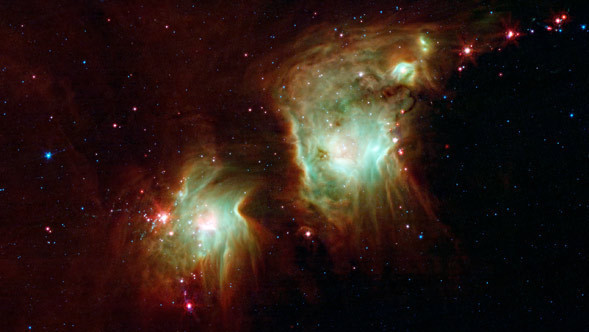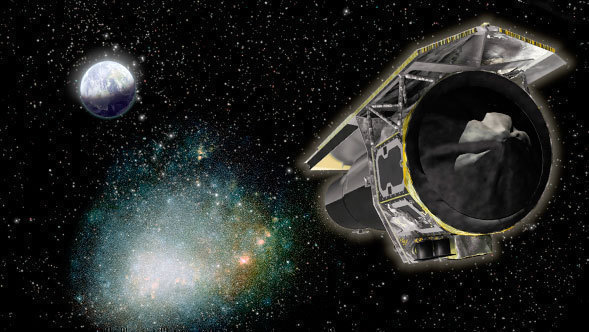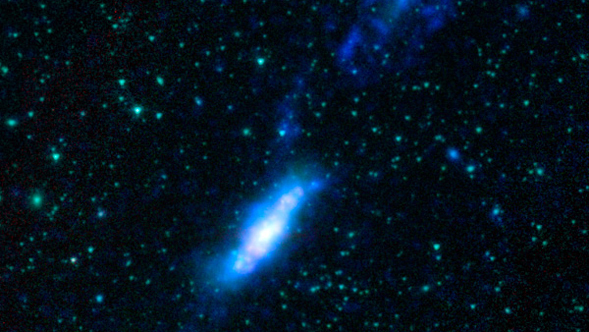
By Robert Hurt | July 5th, 2011
Looking like a pair of eyeglasses only a rock star would wear, this new image of a nebula brings into focus a murky region of star formation. NASA's Spitzer Space Telescope exposes the depths of this dusty nebula with its infrared vision, showing stellar infants that are lost behind dark clouds when viewed in visible light.
Best known as Messier 78, the two round greenish nebulae are actually cavities carved out of the surrounding dark dust clouds. The extended dust is mostly dark, even to Spitzer's view, but the edges show up in mid-wavelength infrared light as glowing red frames surrounding the bright interiors. Messier 78 is easily seen in small telescopes to the naked eye in the constellation of Orion, just to the northeast of Orion's belt, but looks strikingly different, with dominant, dark swaths of dust. Spitzer's infrared eyes penetrate this dust, revealing the glowing interior of the nebulae.
The light from young, newborn stars are starting to carve out cavities within the dust, and eventually, this will become a larger nebula like the "green ring" imaged by Spitzerhttp://www.spitzer.caltech.edu/news/1287.
A string of baby stars that have yet to burn their way through their natal shells can be seen as red pinpoints on the outside of the nebula. Eventually these will blossom into their own glowing balls, turning this two-eyed eyeglass into a many-eyed monster of a nebula.
The full image can be found in the Spitzer gallery.
 Happy Anniversary, Spitzer
Happy Anniversary, Spitzer
 Teasing Apart Galaxy Collisions
Teasing Apart Galaxy Collisions



